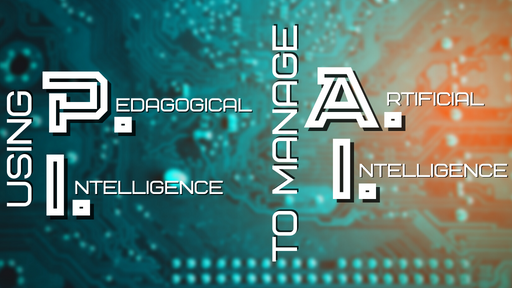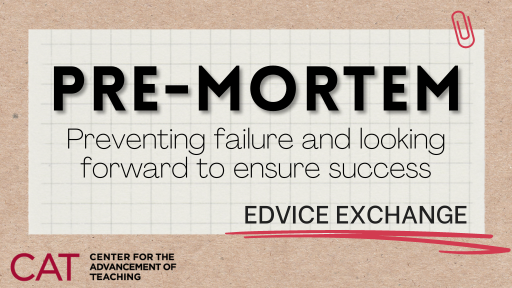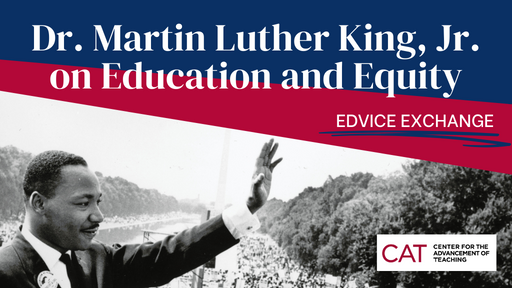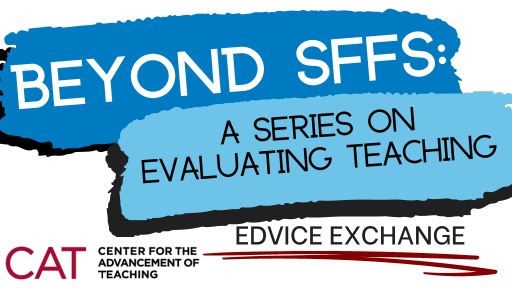Cliff Rouder, Ed.D.

“I think I can, I think I can,” goes a well-known line from the classic children’s fairytale, The Little Engine that Could. In this blog post we’re going to answer the question, “How can we, as instructors, help our students to “think they can”? In other words, how can we help develop students’ self-efficacy?
Let’s start by exploring the concept of self-efficacy. Self-efficacy refers to the level of a person’s confidence in their ability to successfully perform a behavior. Well-known psychologist and researcher Albert Bandura was the first to demonstrate that self-efficacy has an effect on what individuals choose to do, the amount of effort they put into doing it, and the way they feel as they are doing it. Subsequent theorists have also demonstrated that self-efficacy contributes to motivation and is a predictor of intentions to change behavior. Still other researchers have demonstrated the ability of self-efficacy to predict outcomes of student success, such as cumulative GPA, grades, persistence, and stress/strain/coping.
Clearly, academic self-efficacy matters on a variety of important fronts. Our next task is to examine our role in developing students’ self-efficacy. Here we can get a bit of guidance from Bandura, who posited that there are four sources of our self-efficacy development:
- Performance Accomplishments: Previous successes raise mastery expectations, while repeated failures lower them. Here, we can give students opportunities for practice that provide a moderate (neither too easy nor too hard) challenge.
- Vicarious Experience: Aka modeling, self-efficacy is gained by observing others perform activities successfully. Here, we can create opportunities for peers (and you) to model productive ways of approaching course requirements.
- Social Persuasion: Activities where people are led, through suggestion, into believing that they can cope successfully with specific tasks. Here’s where providing frequent, targeted, and motivating feedback can help. See the CAT’s recent EdVice Exchange blog post for providing feedback that nourishes the mind and heart.
- Affective arousal: Some feelings, e.g., stress and anxiety, can lower self-efficacy. Here’s where acknowledging and addressing these feelings can help.
Below are just some of the many learning assessment techniques that can target and develop students’ sources of self-efficacy. (For a comprehensive collection of learning assessment techniques, check out Barkley and Cross’s recent book available online through Charles Library.)
Think-Pair-Share
Pose a challenging question to students that they must consider alone and then discuss with a neighbor before settling on a final answer. This is a great way to have students model their thinking for their peers. A think-pair-share can take as little as three minutes (quick-response) or longer (extended response), depending on the question/task.
Classroom Polling
Ask students questions throughout your lecture using our newly-licensed polling software, PollEverywhere. Using this method, the learner and instructor can both check understanding anonymously. An alternative low-tech approach is to give students a set of numbered index cards that correspond to the answer choices and ask them to hold up their number at the same time.
Group Formative Quizzes
Have students complete a quiz individually and then work with a group to compare and discuss answers before submitting a group answer. An added possibility is to have the group use “scratch-off” cards called Immediate Feedback Assessment Technique (IF -AT) sheets. This allows students to assess their understanding as well as practice articulating and explaining concepts to classmates.
One-Minute Paper
Either during class or at the end of class, ask students to produce a written response to a question. This technique can be used to collect feedback on understanding by asking them to identify what they thought the key points of a lecture are, what the most confusing point is, or to voice a question. It can also be used to “take the temperature” of the class and address affective concerns such as stress and anxiety related to the assignment or assessment.
Student-Generated Test Questions
These allow you to assess what students consider to be the most important content, what they understand as useful test questions, and how well they understand the material. They allow students to practice organizing, synthesizing and analyzing large amounts of information in order to prepare for summative assessments.
Rubrics
Sharing the rubrics you have for course assignments and projects, and most importantly, giving them practice using the rubrics to confirm understanding of your expectations, can help lower anxiety about unclear expectations.
You may be asking yourself, “Do I have the self-efficacy to try a new learning assessment technique!?” If so, great! Try it out. Just remember that ultimately your assessments should be chosen based on whether they are helping your students meet the course goals, so use them intentionally. Also, be clear about (and make transparent to your students) the purpose and value to them of engaging in the activity/assessment.
If your self-efficacy is low, then look to your peers who can model how to successfully implement these learning assessment techniques, help persuade you to try one, and/or talk with them about the apprehensions you might have and how they addressed them. Then, be sure to reflect on the experience and see what you might improve the next time you try it. Getting feedback from your students can also help you assess what might need to be tweaked the next time you implement the technique.
I also invite you to make an appointment with a CAT staff member to talk through your plan. You can also arrange to have someone from the CAT come to your in-person or virtual class to give you feedback. So, let’s help our students go from “I don’t think I can” to “I know I can!
Follow our Using PI to Manage AI blog series at EdVice Exchange
Follow our companion Using PI to Manage AI CAT Tips Video Series.
Cliff Rouder serves as Pedagogy and Design Specialist at Temple’s Center for the Advancement of Teaching.




